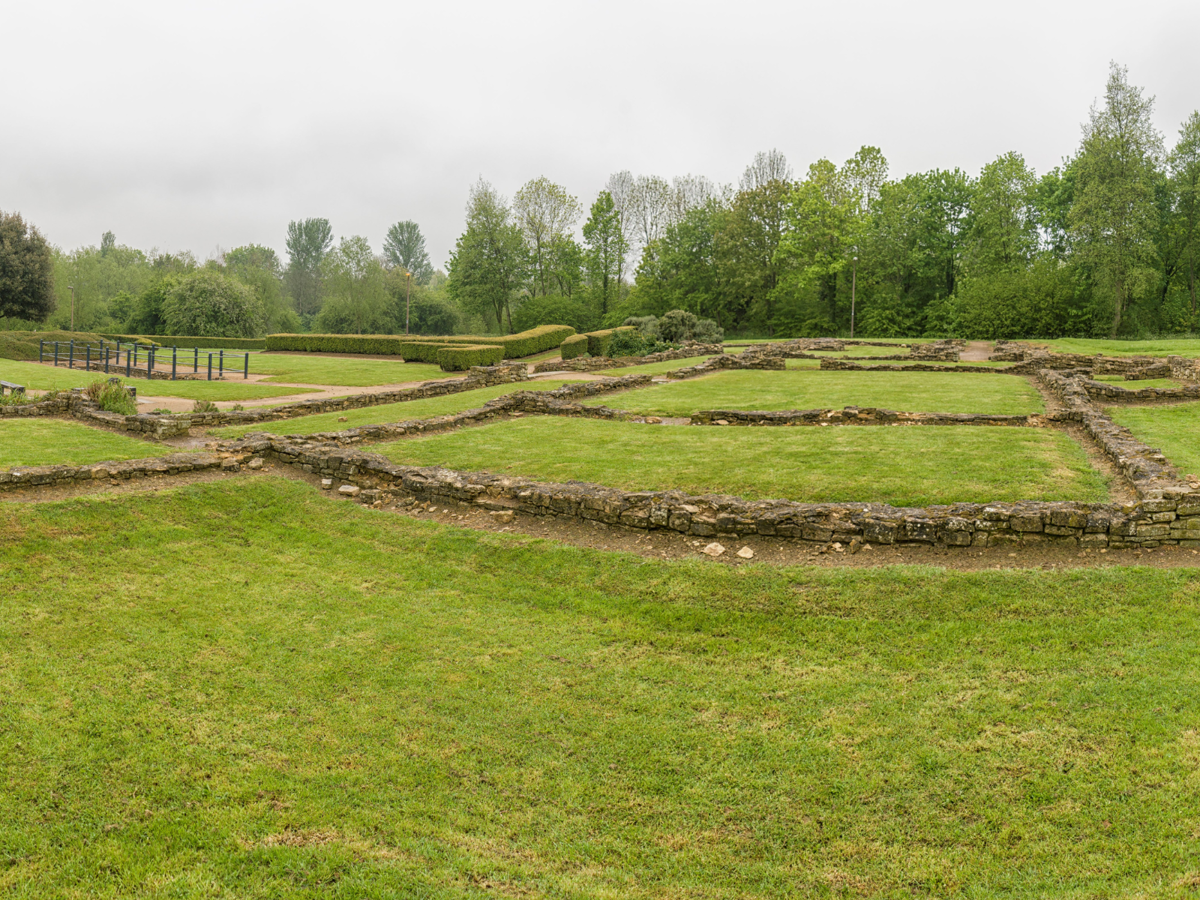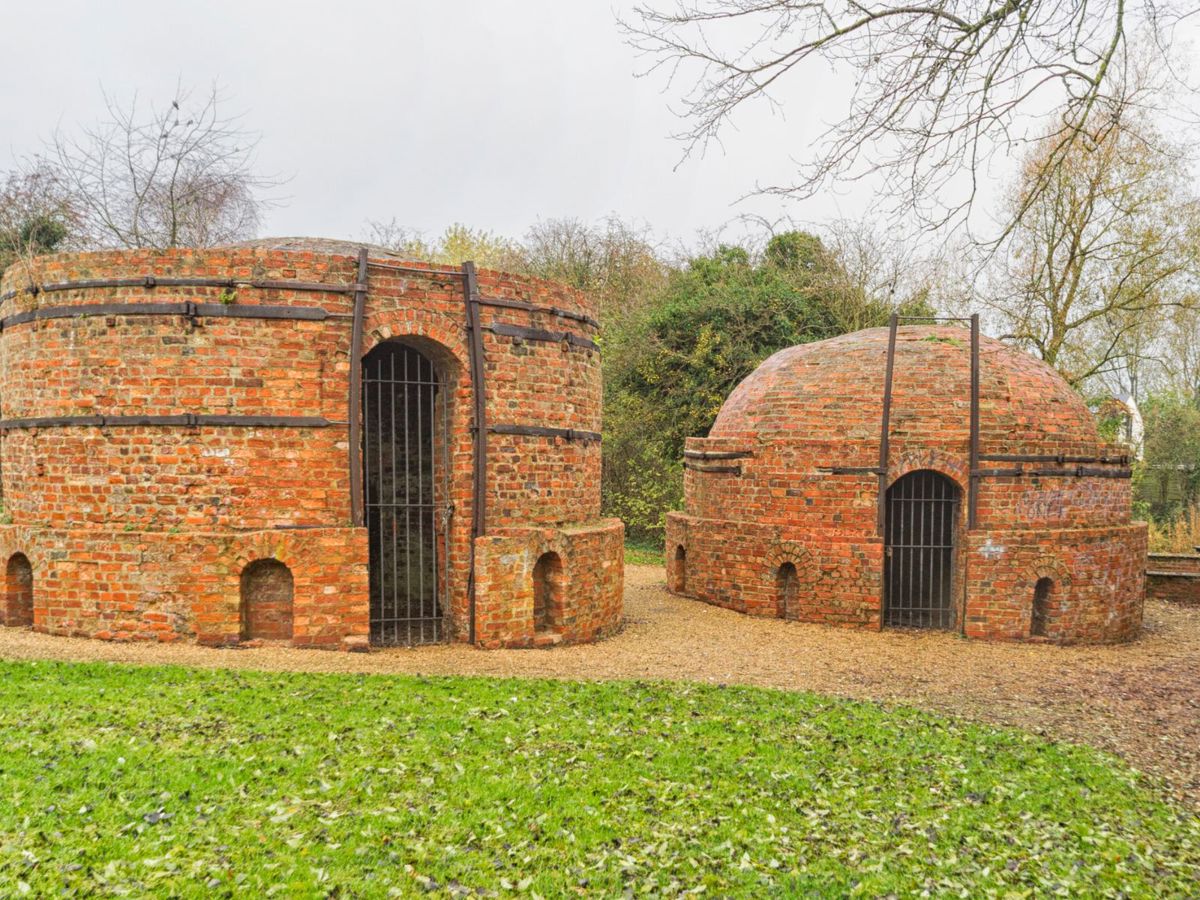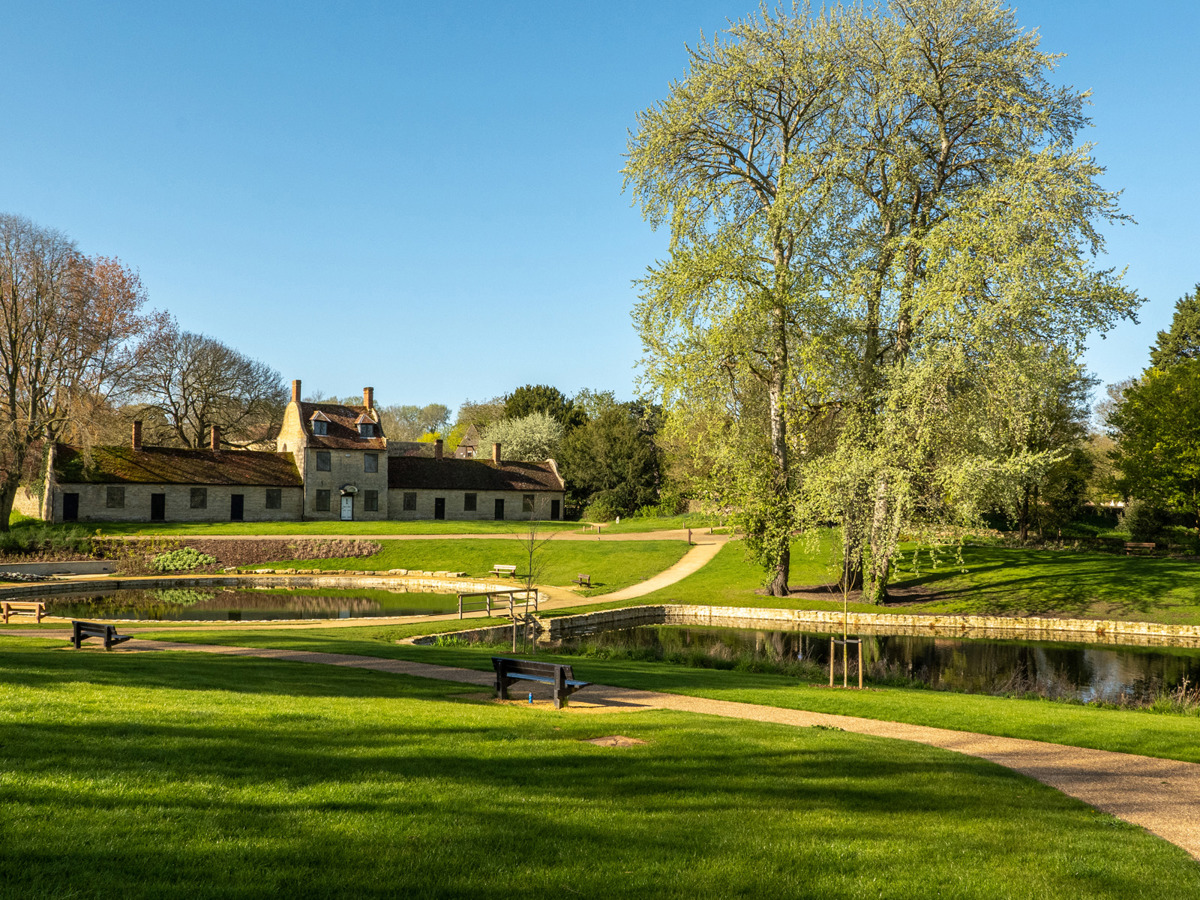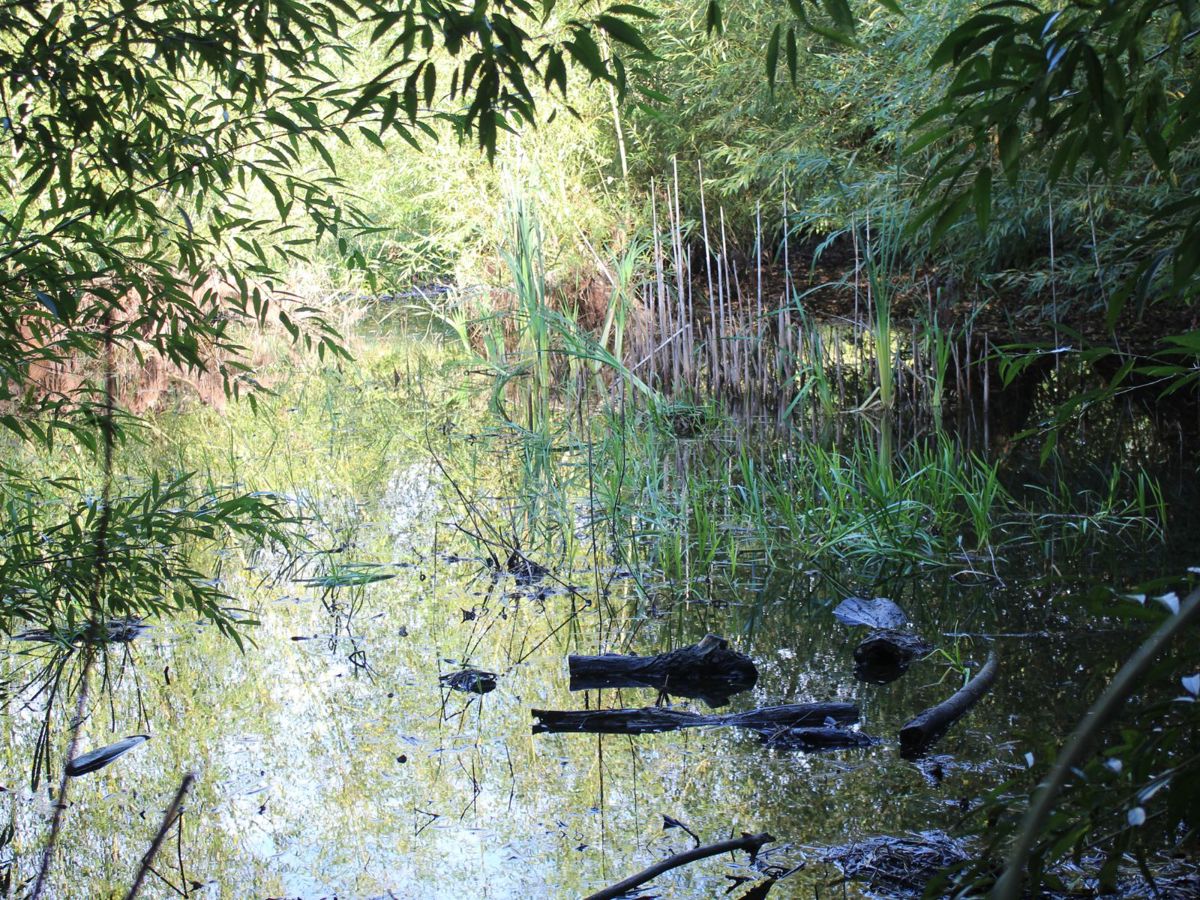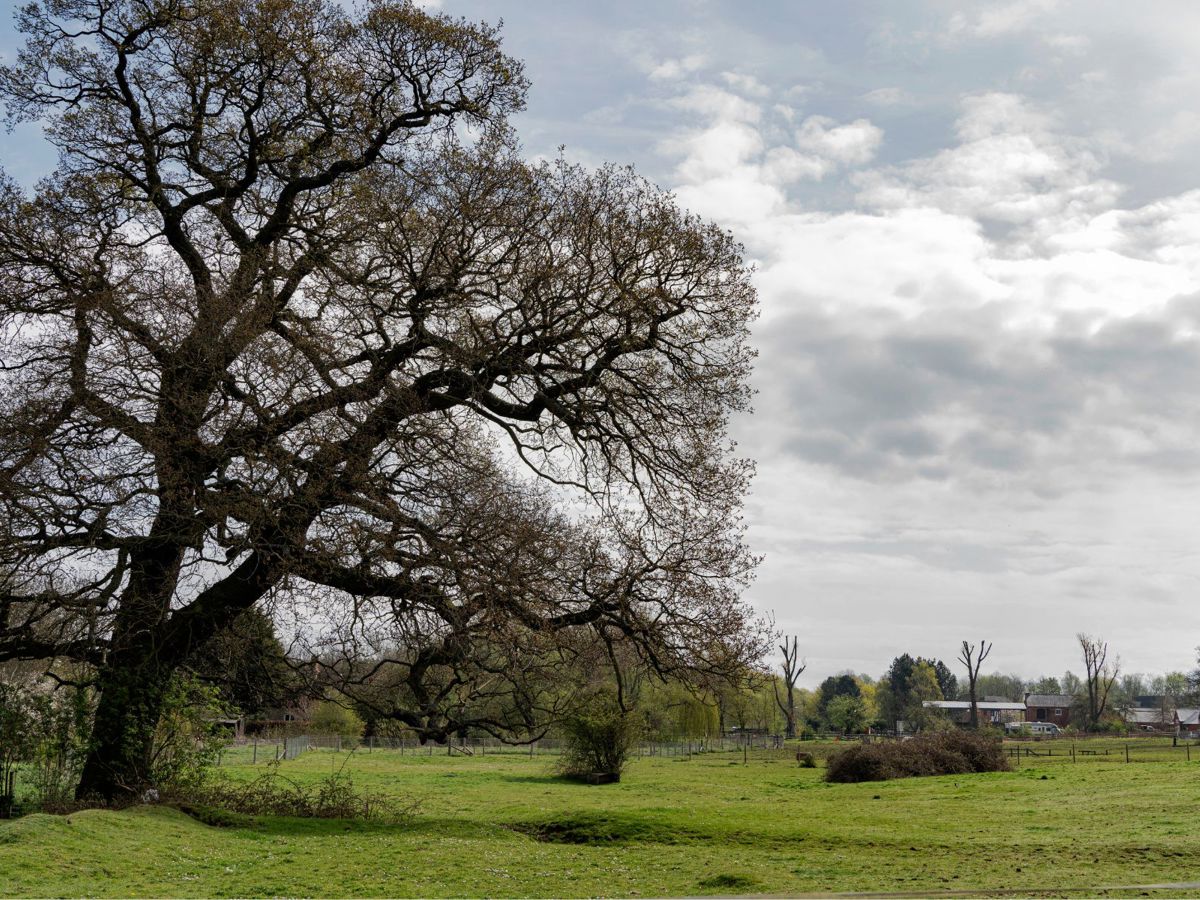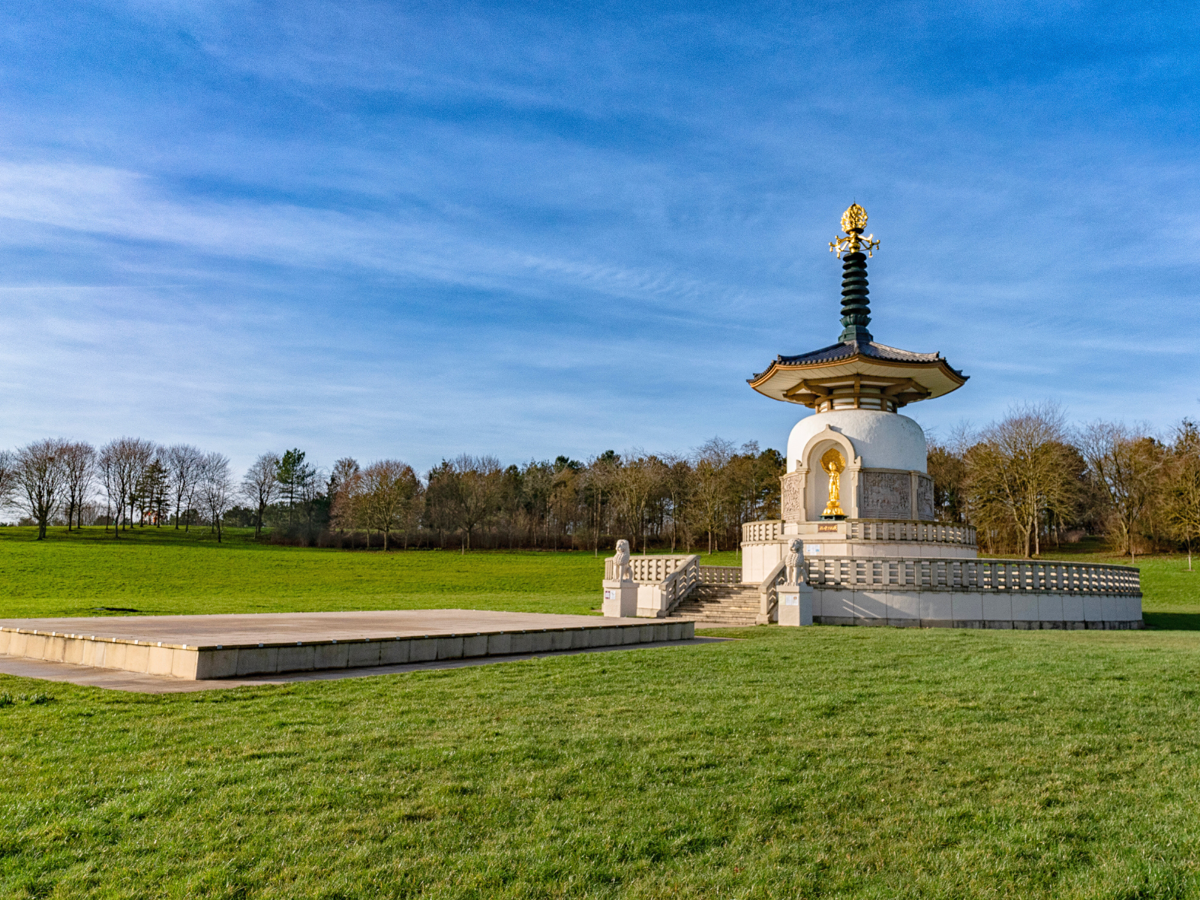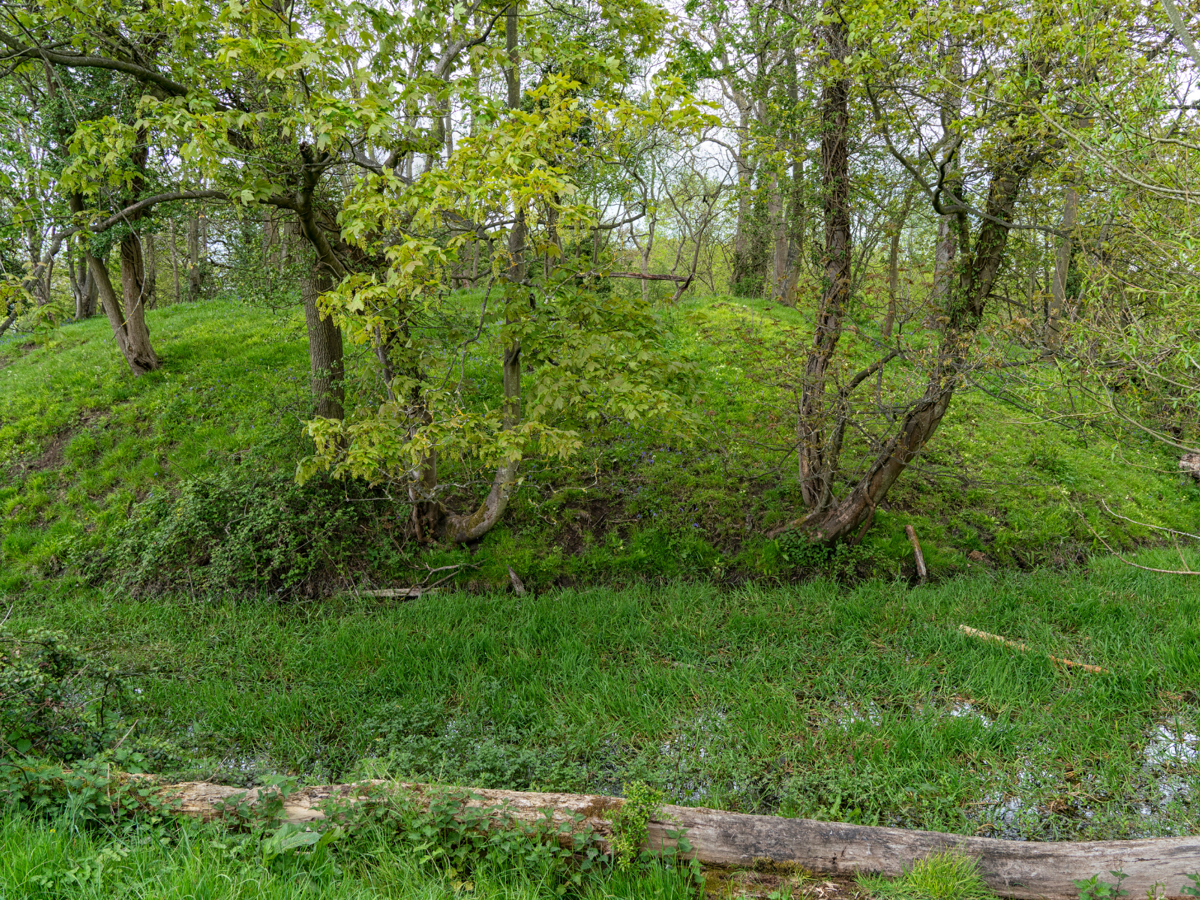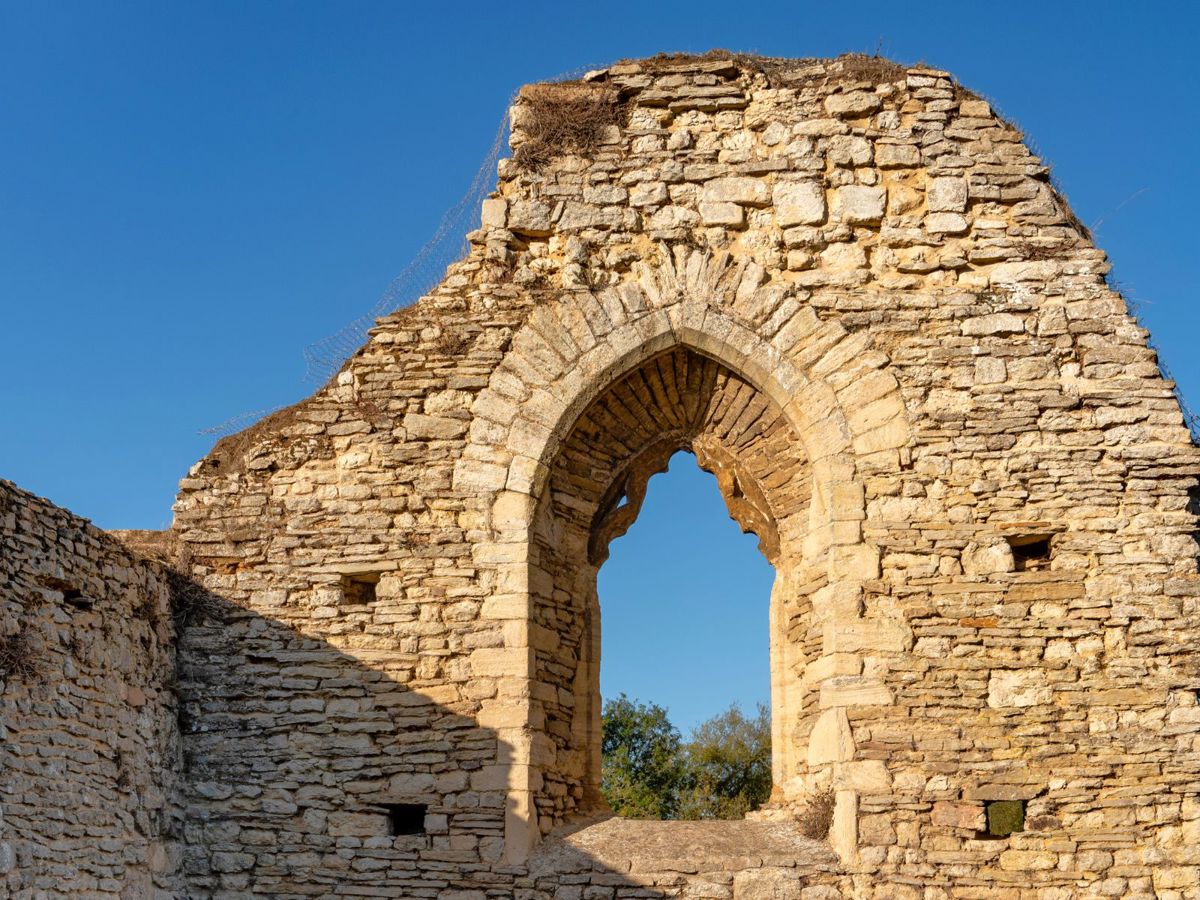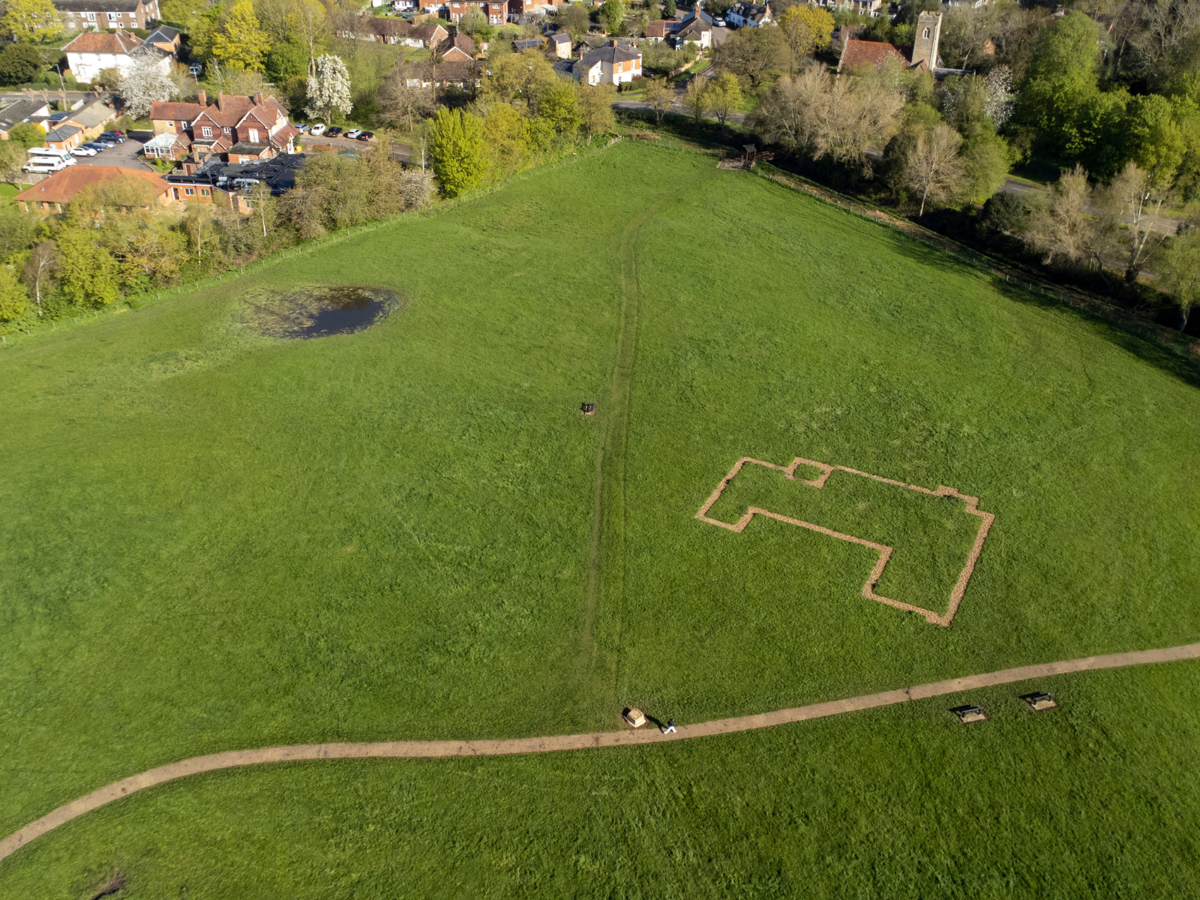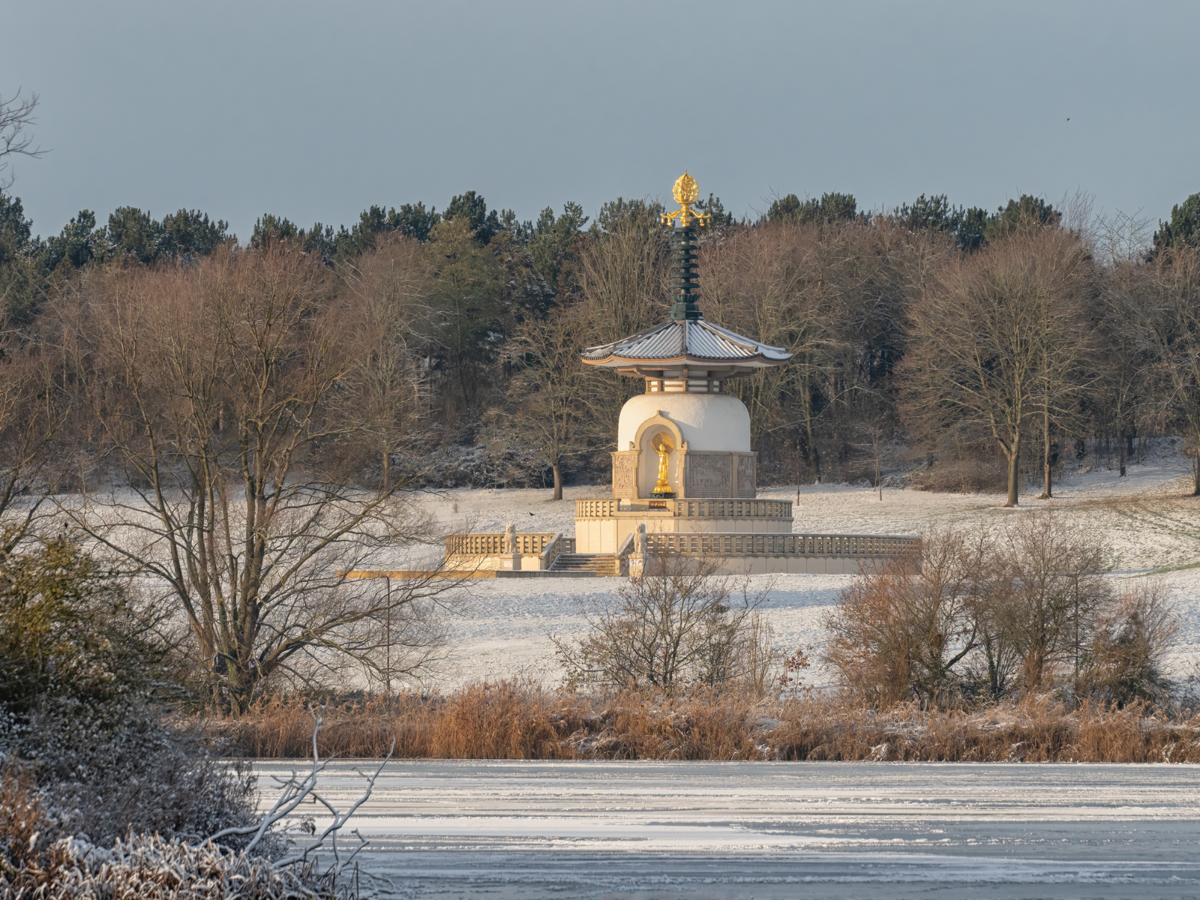
Shenley Toot
The remains of a motte and bailey castle known as the 'Toot' and several other moated sites can be found near Shenley Wood.
Shenley Toot at Shenley Church End, Milton Keynes, includes the remains of a motte and bailey castle and the earthworks of a landscaped garden of a Tudor manor house. Evidence from the site suggests that it was in continuous use from the 12th to the 18th centuries.
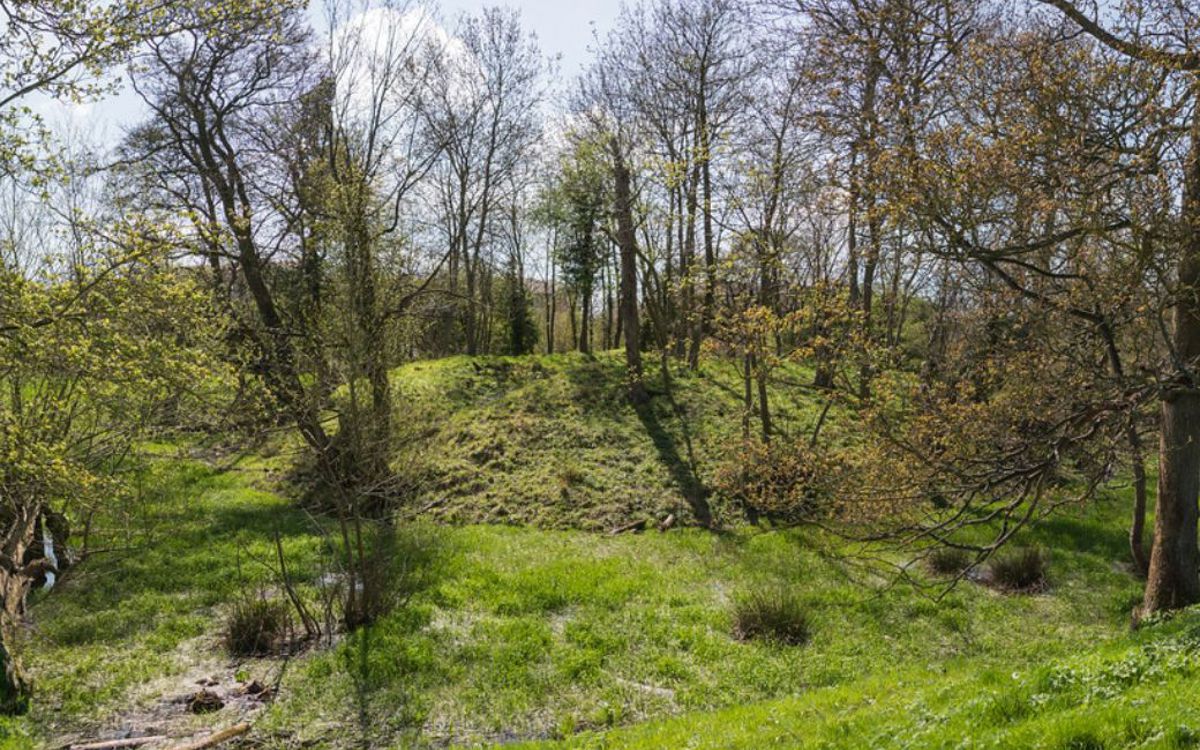
These were simple fortifications introduced during the early medieval period by the Normans. The motte was a large mound of earth that would have been topped by a timber tower (the keep). You can still see the mound and part of the surrounding ditch.

What is a Bailey?
The bailey is the land area around the motte that used to be surrounded by a barrier and a moat (wide water ditch). If you walk around the edge of the heritage site, you follow the edge of the bailey. You can also see parts of the moat surrounding the bailey south of the site. If an enemy broke through the outer defences, the peasants sheltering inside the bailey could race up the steps of the motte, draw back the drawbridge and carry on the fight from the safety of the barrier at the top.
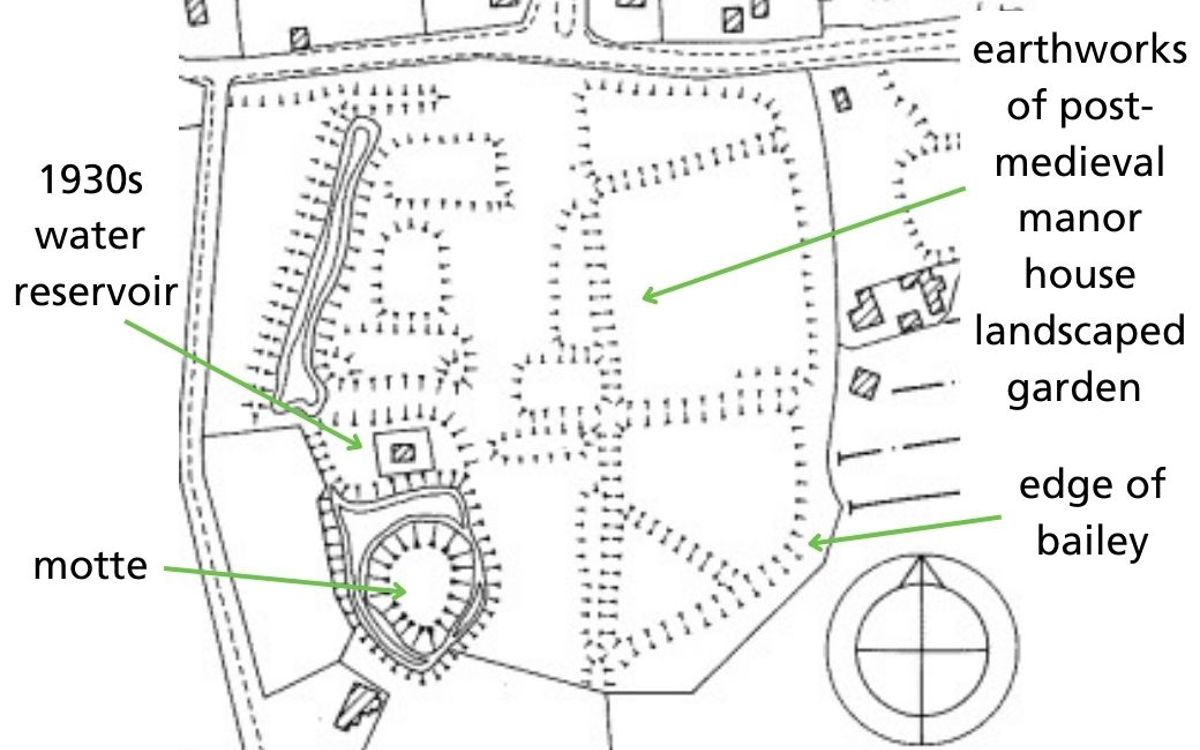
When William the Conqueror invaded in 1066, he took all the land in his name and lent it to his most trusted knights. As well as keeping them loyal, this also helped the King control the population. It provided a defence but was also a sign of power. The Toot could have been built during this period, possibly by Hugh Earl of Chester. However, it may have been constructed later in the medieval period during a civil war called the Anarchy (1135 and 1153). This was between Empress Mathilda and her cousin Stephen, who both claimed the English throne.
The image on the right shows the earthworks found on site (with thanks to Buckingham Archaeological Society).
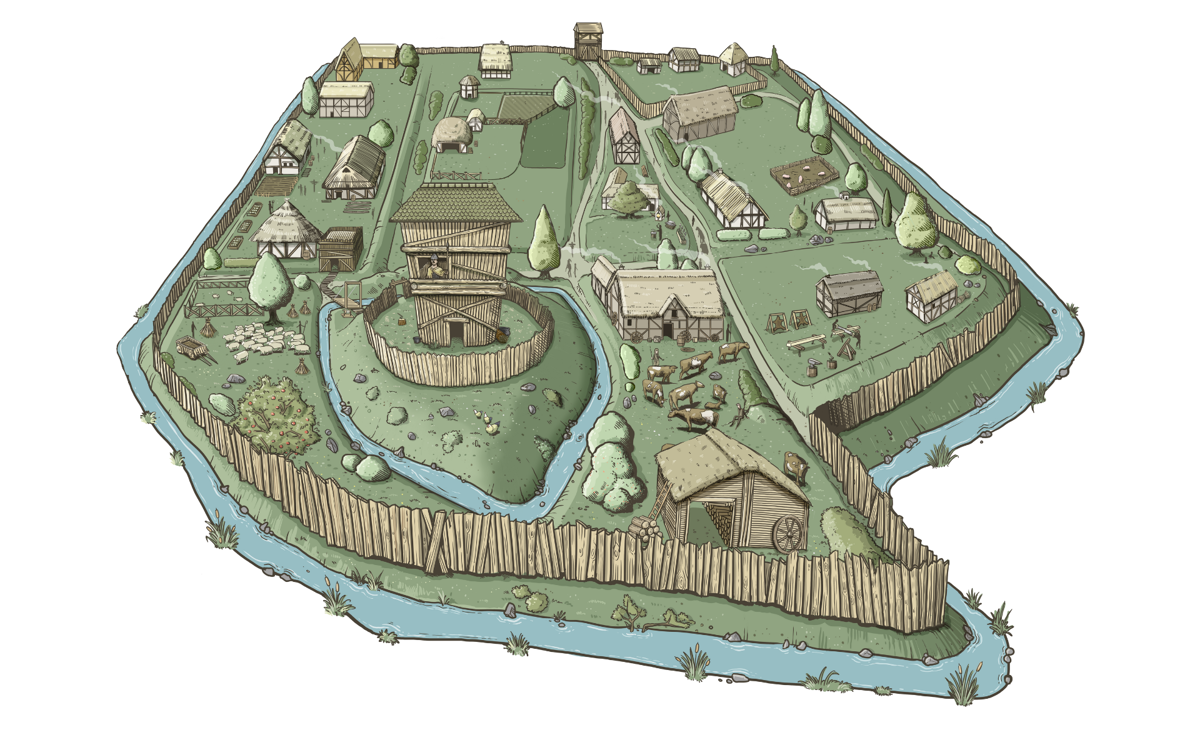
The image on the left shows what the motte and bailey may have looked like (copyright: Chiba Creative).
The medieval earthworks at this site have been disturbed many times over the centuries by building works and landscaping, but we can make suggestions from other sites.
The lord of Shenley Church End or their representatives would have lived with their family and servants in a timber, wattle, and daub hall in the bailey.
The bailey would have included other timber buildings; a bakery was needed for pies and bread, a brewhouse for ale, and large storehouses were essential to be filled with supplies in times of danger. There was probably a smithy for the repair of weapons, armour, farm implements, horseshoes and tools; a carpenter shed for woodwork using the timber and coppice poles from nearby Shenley Wood; a wheelwright’s yard, and perhaps a cooper’s yard for barrels and other workshops.
At harvest, wheat, barley and similar produce from the surrounding field would be cut and stored in the barns. When danger threatened, animals were driven behind the sheltering barrier to keep them out of the reach of a marauding enemy soldier and to ensure a good supply of meat.
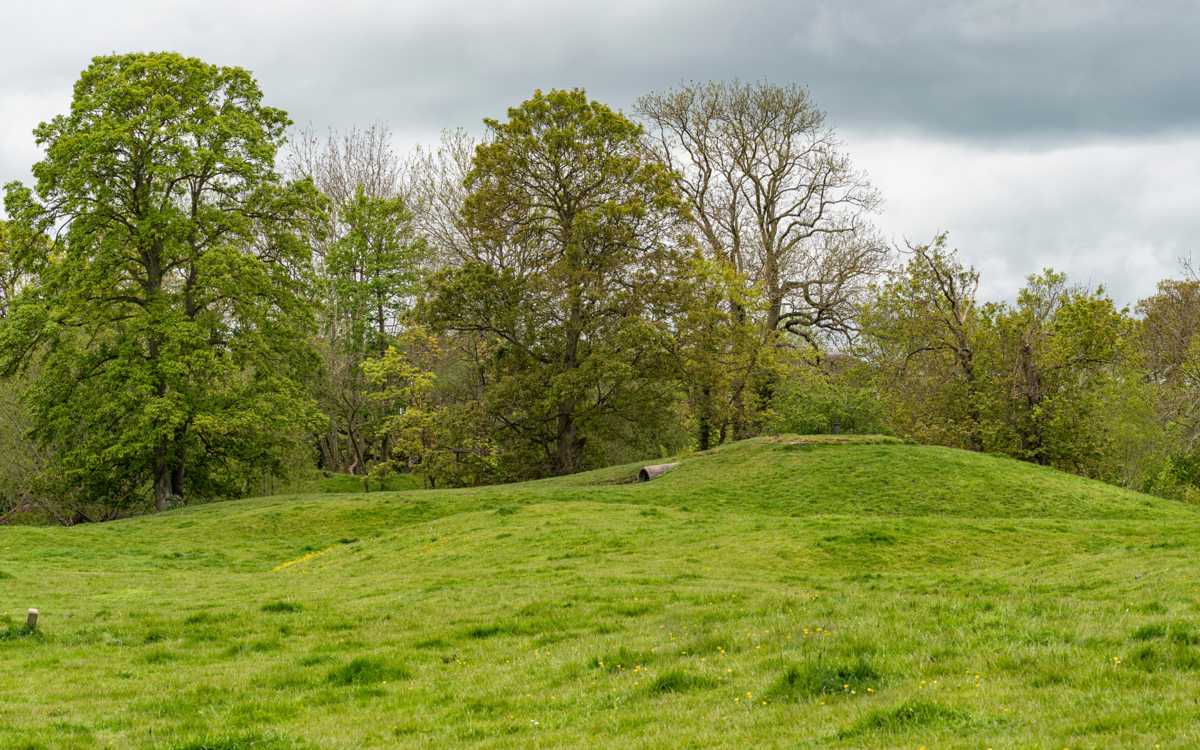
The earthworks that you can see in the bailey are believed to be features of the landscaped garden of a post-medieval manor house. This fell into disrepair and was pulled down by Matthew Knapp in 1774. A few years later, this brother and heir, the Reverend Primatt Knapp, built a rural cottage on the motte and constructed a drawbridge over the moat. This, too was demolished and the motte now stands empty.
You will notice a second mound to the north of the motte with a pipe coming from it (see photo below). This is part of a water storage reservoir built in the 1930s and unrelated to historic earthworks.
Shenley Church End Grange & Moated site at Shenley Brook End
In addition to the ‘Toot’ the green spaces in Shenley Church End and Shenley Brook End have moated areas listed as scheduled ancient monuments. These moated sites are scheduled as they retain environmental evidence for the agricultural purposes.
There are thousands of moated sites in England, they consist of wide ditches, often seasonally water-filled. They form a significant class of medieval monument and are important for understanding the distribution of wealth and status in the countryside.
The moated site at Shenley Church End survives largely undisturbed and intact as an example of medieval earthwork and unusual in that there are two adjoining moats. A main significant feature is the enclosure platform which may well have been base of a large barn or grange from where this site gets it's name. The site is now used as large paddock located just off Duncan Grove. Look out for the information board next to the play area with information about the site.
The small moated site at Shenley Brook End earthworks are just off the junction of Childs Way and Fulmer Street. The moated site here remains visible as a D-shaped island with a ditch on the north side which is often water-logged. A slightly raised oval mound near the western side is thought to represent the remains of a house platform.
Where can I find out more?
Milton Keynes is one of the most studied archaeological landscapes in the UK and there are lots of other heritage sites in The Parks Trust parks and elsewhere in the city. To find out more about this site, or the many others, look below.
- Buckinghamshire Archaeological Society: In addition to talks and online information, they have also published detailed books and reports on the excavations.
- MK Museum - They have a model of the Toot in their agricultural barn.
- View Historic England Listing
With thanks to Bob Zeepvat and Nick Crank.
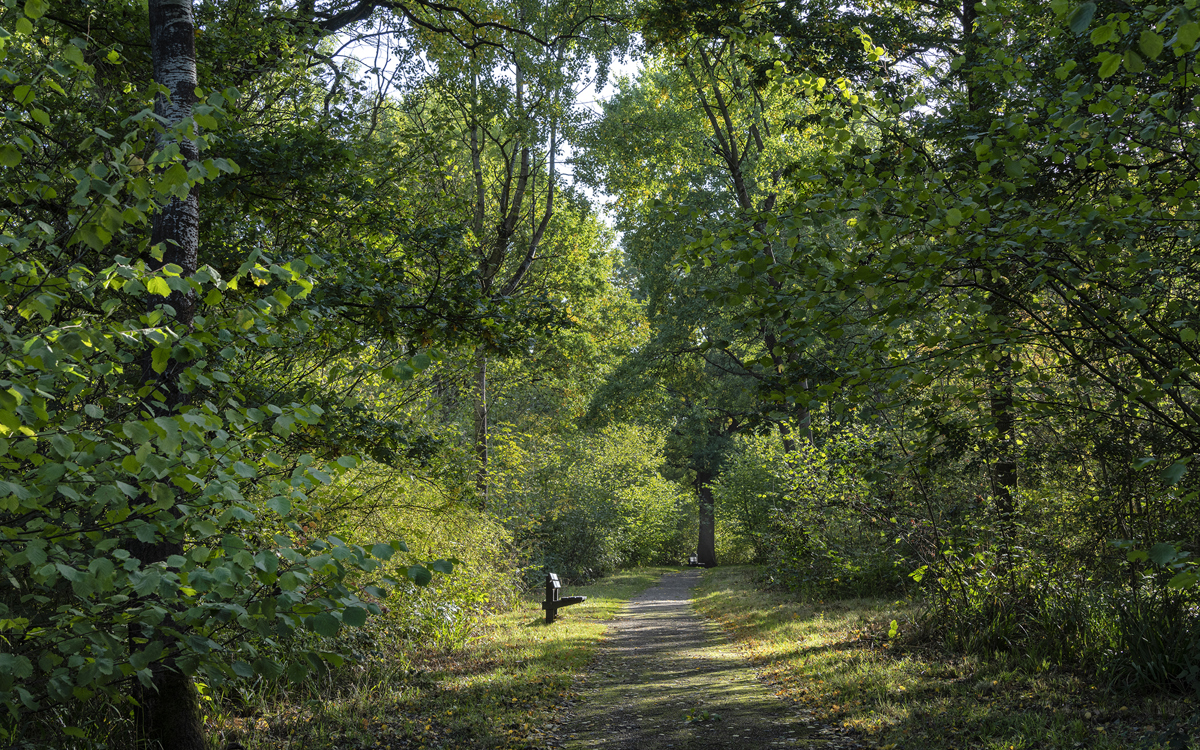
The Toot can be found at What3Words location magnitude.motored.offer. This historical site is just north of the ancient Shenley Wood which dates back to the Domesday survey of 1086.
The closest car park is available at the wood, from here you can walk across the bridge to access the site.
Discover Milton Keynes' heritage by exploring the city's historical landmarks and scheduled ancient monuments.

